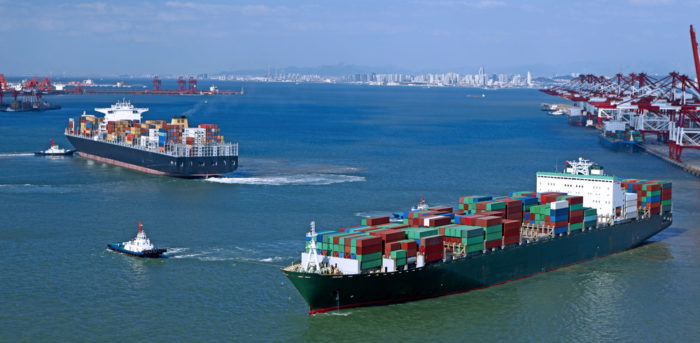The risk to container shipping from US-led trade wars is currently low, but potentially very damaging, according to the latest forecast by global shipping consultancy Drewry. Analyzing potential scenarios for eastbound Transpacific container trade, Drewry suggests that, in the worst case, as much as 1.8 million TEU, or nearly 1% of world loaded traffic could be lost to the market over a period of time.
In the March report we said that we were hopeful of a peaceful resolution, but at this point in time we must accept that tariffs are going to become a reality. The only question now is: how severe will they be?
…said Simon Heaney, senior manager, container research at Drewry and editor of the Container Forecaster.
Additional tariffs of 25% on the first list of 818 Chinese products, worth approximately $34 billion, are scheduled to be collected by US Customs from Friday 6 July. A second list of 284 newly recommended products covering $16 billion is currently being reviewed, while there are threats of further tariffs on as much as $400 billion of goods to follow, in response to Chinese retaliation.
This latest edition of Container Forecaster analyses three potential scenarios for eastbound Transpacific container trade, based on the intensity of a trade war, ranging from tariffs of $50 billion to $450bn being applied to Chinese imports.
As things stand, the impact from the initial two lists of Chinese products alone would be relatively insignificant at around 200,000 TEU.
Drewry research shows that revised lists announced on 15 June were heavily weighted towards industrial goods, while also being readily available from other trading partners. China only exported about 13% of the first list of products to the US last year and around 8% of products on the second list.
With other sourcing options available, tariff increases on Chinese goods on these initial products lists will most likely create a small amount of trade diversions and raise the prospects of other exporting partners of the US.
The current risk threat to container demand is relatively low, even when factoring in tit-for-tat measures and disputes with other trading partners, but there is clearly the potential for matters to get much darker if additional tariffs are forthcoming. Perhaps, the biggest risk is the unpredictability of it all and the potential confidence knock it will give to the world economy, just when it seems to be finding its feet.
The trade disputes take the gloss of the strong demand growth seen in the early months of 2018, driven by a speeding of the world economy.
From this report, Drewry is using a redesigned demand forecasting technique, under the guidance of new senior quantitative economist Mario Moreno. The improved model now enables us to present five-year demand forecasts for global and regional port throughput and selected tradelanes within every quarterly report.
Subsequently, Drewry has upgraded its demand forecast for the next two years to 6.5% and 5.8% respectively.
There was also an upgrade to the fleet growth outlook for this year after surprisingly few demolitions. However, anticipated supply growth of 5.4% is below the revised demand increase, which will support ongoing supply-demand rebalancing.
There will be some gain for carriers this year in the form of increased demand and slowly improving supply-demand, but a lot more pain. Escalating fuel prices have caused us to slash the industry’s profitability forecast to break-even and while freight rates are expected to rise modestly in 2H18 it won’t be sufficient to turn things around. In some ways, buoyant demand is a problem for carriers right now as every extra box shipped at a loss only amplifies the deficit.






























































